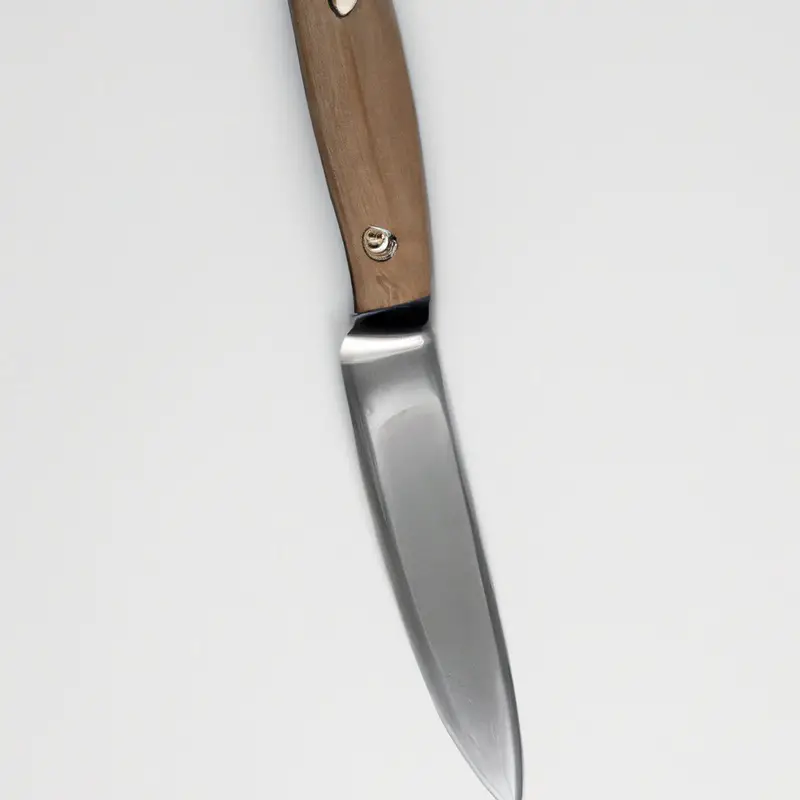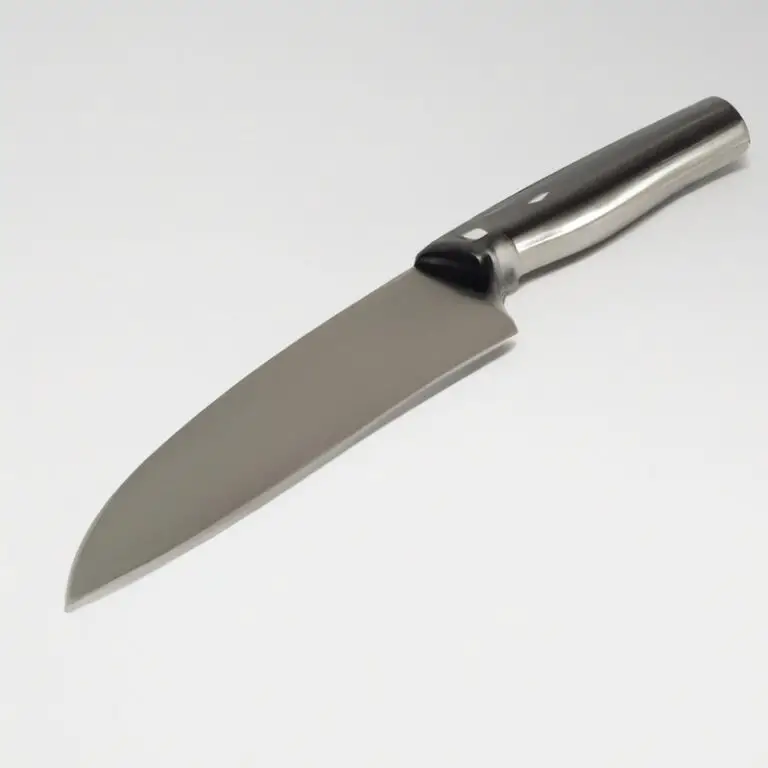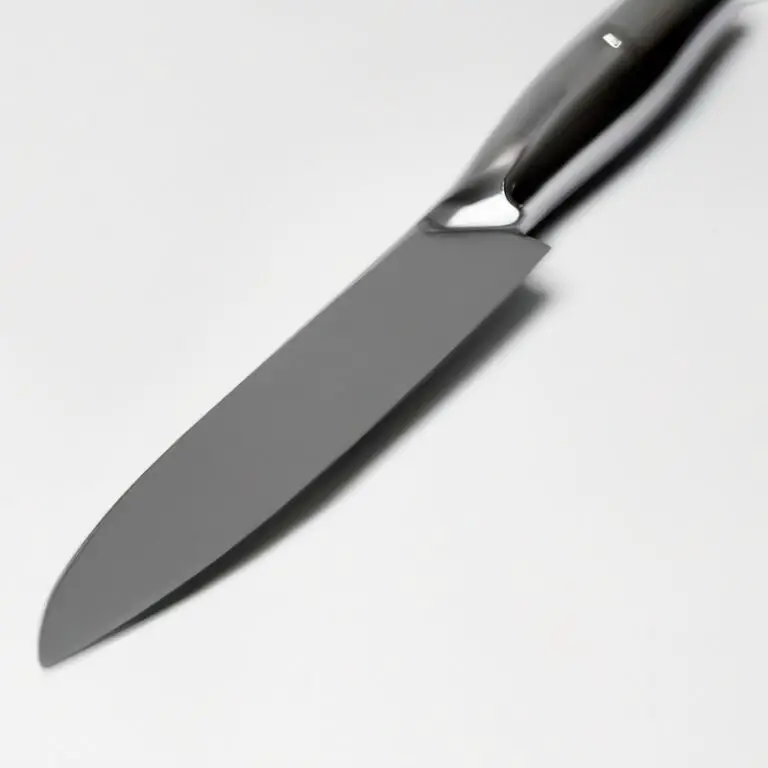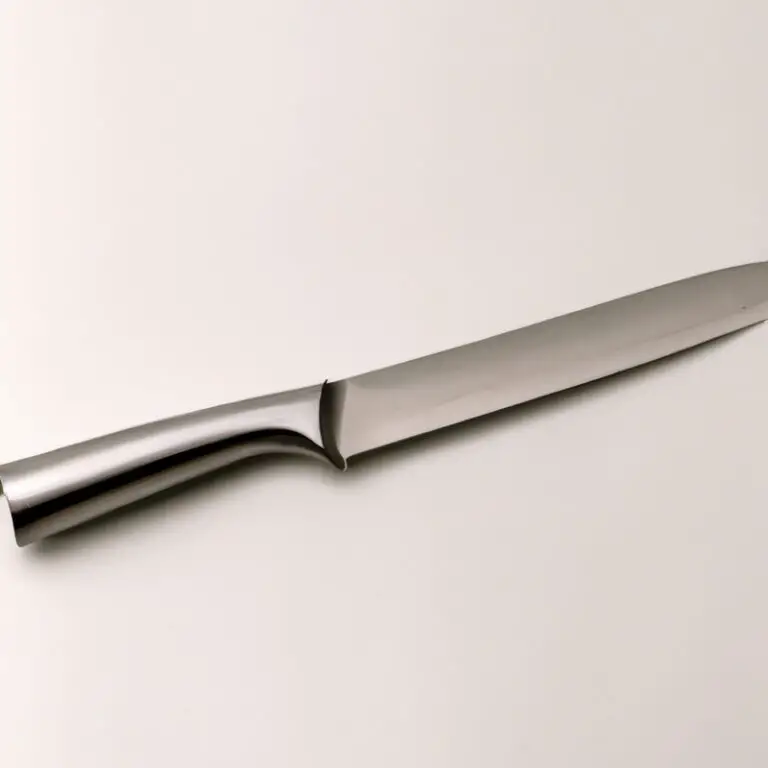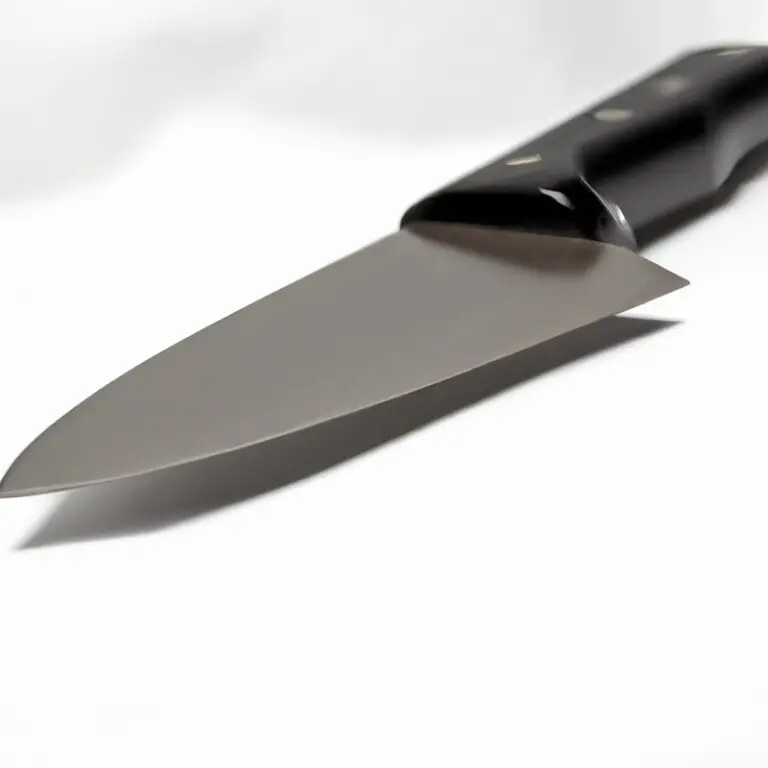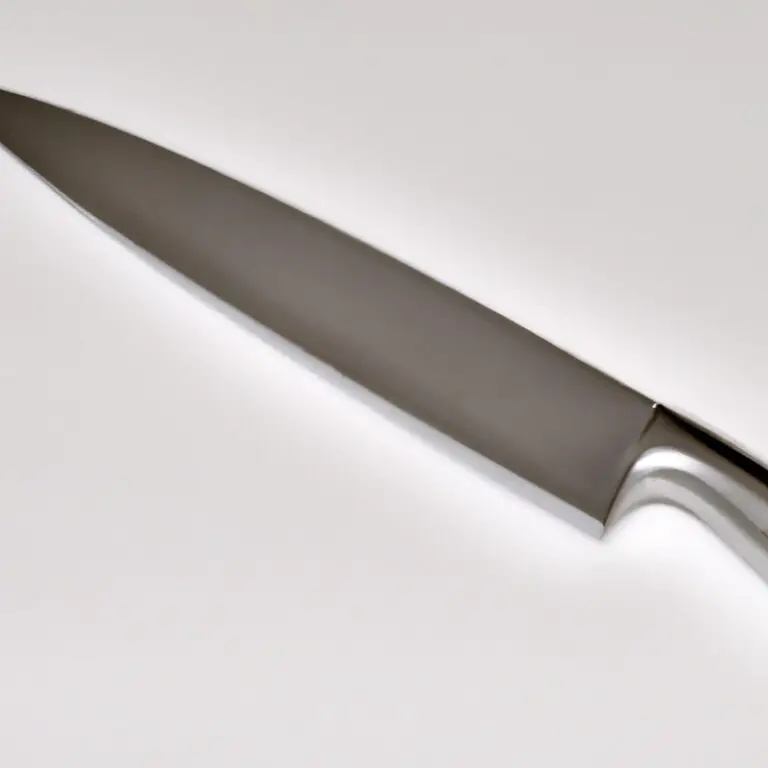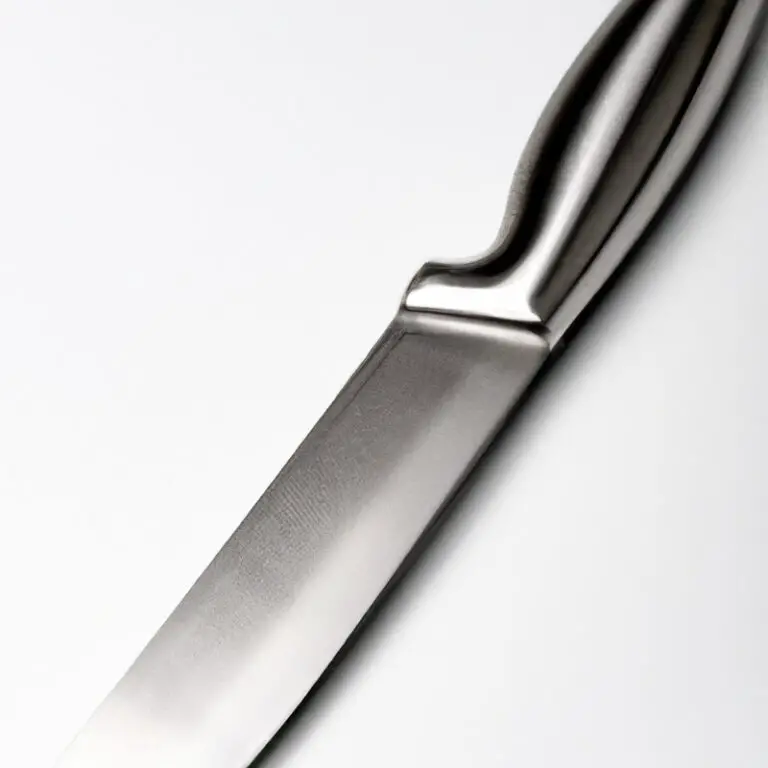What Are The Main Features To Consider When Buying a Paring Knife? – Expert Tips
Key Takeaways:
- Look for a paring knife with a sharp and durable blade made of high-quality steel for precise cuts and easy maintenance.
- Consider the handle material and design for a comfortable and secure grip during use.
- Choose a paring knife with a versatile blade shape and size that can handle a range of tasks, from peeling to detailed cutting.
- Take into account the overall balance and weight of the knife for improved control and ease of use.
When it comes to preparing delicate fruits, vegetables and meats in the kitchen, a quality paring knife is an essential tool for any home cook or professional chef. But with so many choices out there, it can be overwhelming to determine which one to purchase.
The key is to consider the features that are most important to you, such as blade material, length, shape, handle material, design, balance and weight, tang, edge type, and maintenance.
In this article, I’ll guide you on what to look for while buying a paring knife to increase your cooking experience.
| Feature | Description |
|---|---|
| Blade length | The length of the blade usually ranges from 2.5 to 4 inches. Choose a length that will work best for the types of food you typically prepare. |
| Blade material | The blade can be made of stainless steel, high-carbon steel, or ceramic. Stainless steel is rust-resistant and durable, while high-carbon steel holds a sharp edge longer. Ceramic is lightweight and sharp, but prone to chipping. |
| Handle material | The handle can be made of various materials like wood, plastic, or rubber. Choose a material that feels comfortable and provides a secure grip. |
| Balance | A well-balanced knife will feel comfortable in your hand and make it easier to maneuver during use. Ensuring the blade and handle are properly balanced is important. |
| Dishwasher-safe | While convenient, dishwashers can damage knife blades and handles. Check the manufacturer’s recommendations before placing your paring knife in the dishwasher. |
Blade Material: Choosing the Right Steel
Choosing the right blade material is crucial when buying a paring knife. The most common steel types are stainless steel, high-carbon stainless steel, and carbon steel.
Stainless steel is corrosion-resistant and easy to maintain but can be less sharp than other options.
High-carbon stainless steel is durable, retains sharpness, and is resistant to stains. Carbon steel holds a sharp edge well, but it requires more maintenance and is more prone to rust and stains.
When selecting a blade material, consider your needs and preferences.
If you prioritize low maintenance and ease of cleaning, stainless steel may be the best option. For those who value sharpness and durability, high-carbon stainless steel is an excellent choice.
If sharpness is the top priority, carbon steel may be the right option, provided that you are willing to invest more time in maintenance.
Ultimately, choosing the right blade material comes down to your personal preferences and intended use. It’s essential to research and compare your options to find the right balance between sharpness, durability, and maintenance.
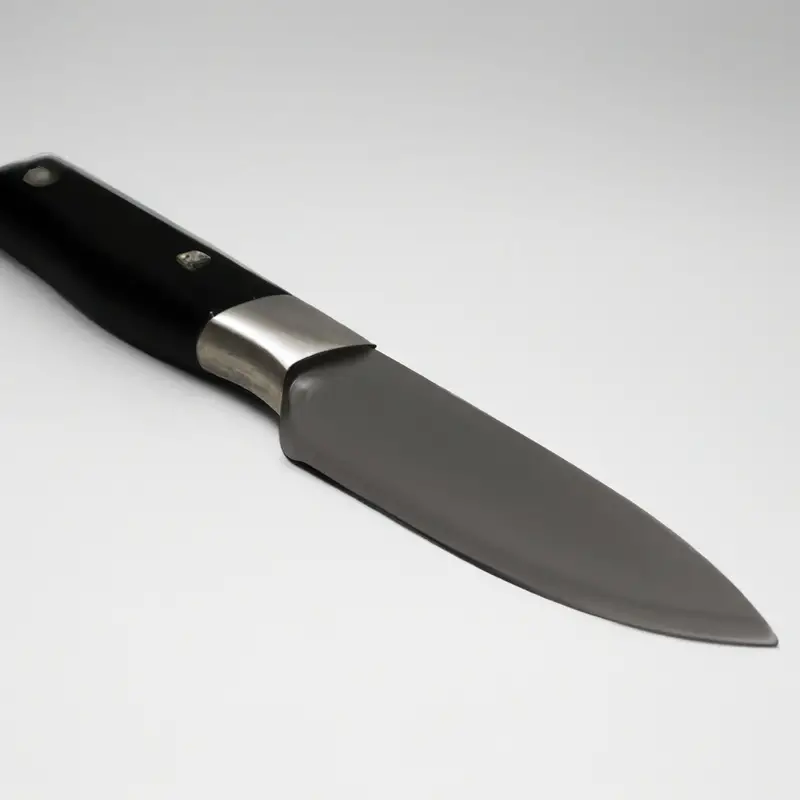
Blade Length: Finding the Optimal Size for Your Needs
Blade length is an essential consideration when choosing a paring knife because it directly affects the knife’s versatility and performance. The ideal size depends on the tasks that you intend to perform with the knife.
Shorter blade sizes, around 2-3 inches, are perfect for small fruit and vegetables, while longer blade sizes, around 4-5 inches, are better for bigger fruits and vegetables and small meats such as poultry.
A longer blade size is more efficient for such tasks as the blade can cover more area with each stroke. The key is to select a blade size that will allow you to accomplish your most common tasks with ease.
Ultimately, choosing the right blade size will improve your cooking experience and result in better food preparation.
Blade Shape: Selecting the Best Profile for You
When selecting the blade shape for your paring knife, there are three main options available: spear point, sheep’s foot, and straight edge. Spear point blades offer a pointed tip for intricate cutting and piercing, while sheep’s foot blades offer a rounded tip for a wider range of cutting movements.
Straight edge blades provide a balanced and versatile option suitable for most tasks.
Consider the tasks you’ll be performing with your paring knife and choose the blade shape that best suits your needs.
Handle Material: Finding a Comfortable and Durable Option
The handle material of a paring knife can affect your overall experience in using the tool. Opting for a comfortable and durable handle will help in preventing hand fatigue and provide better grip while working.
The most popular handle materials for paring knives are wood, plastic, metal, and composite materials.
Wood handles are classic and preferred for their natural beauty, but they require extra care and can be prone to cracking or rot. Plastic handles are sturdy, waterproof, and dishwasher-safe, but they may not offer the same level of grip as other materials.
Metal handles such as stainless steel or aluminum are durable, lightweight, and easy to keep clean, but they can become slippery when wet.
Composite materials like G10 and Micarta offer superior durability and grip, but they may not have the same aesthetic appeal as wood or metal. Ultimately, the choice of handle material depends on personal preference and the specific needs of the user.
It’s important to consider factors like grip, maintenance, and durability when making a decision.
Handle Design: Choosing between Straight or Ergonomic Handle
Choosing between a straight or ergonomic handle design for your paring knife depends on personal preference and comfort. Straight handles offer a traditional look and feel while ergonomic handles are designed to fit comfortably in your hand, reducing fatigue and allowing for extended use.
It’s essential to choose a handle design that provides a comfortable grip and allows for precise control while cutting.
Consider the size of your hand and the tasks you’ll be performing with your paring knife before making a purchase.
Balance and Weight: Getting the Right Balance and Weight for Your Hand
The balance and weight of a paring knife are crucial factors to consider when buying one. The weight of the knife should feel balanced in your hand, making it easy to maneuver without causing wrist fatigue.
The balance point should be at the junction of the blade and handle, allowing you to have more control over the knife’s movements.
To get the right balance and weight, hold the knife in your hand and move it around to see how it feels. You may also want to consider the handle’s material since it can affect the weight and balance of the knife.
A heavier handle may provide stability while a lighter handle can make the knife easier to use for intricate cuts.
The key is to find the perfect balance and weight for your comfort and precision.
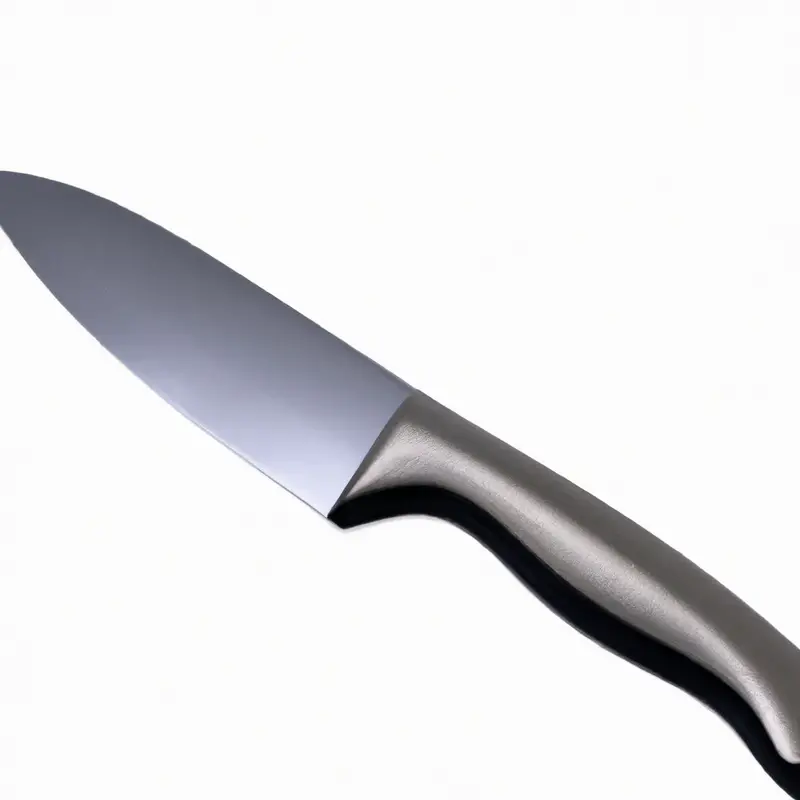
Tang: Full Tang, Partial Tang or Enclosed Tang
The tang is an essential factor to consider when buying a paring knife. It is the part of the blade where the handle attaches to the blade, providing stability and balance.
A full tang knife has the blade running through to the end of the handle, while a partial tang knife has the blade partially inserted into the handle.
An enclosed tang knife has a hidden blade that is enclosed within the handle. Full tang knives are generally more durable and sturdy, providing better balance and control when cutting.
Partial tang knives can still provide adequate balance, but they’re not as strong.
Enclosed tang knives are less common, as they tend to be less sturdy and less durable. When it comes to choosing the tang of your paring knife, consider your intended use, budget, and personal preference.
A full tang knife may be more expensive, but it offers the best balance and control.
A partial tang knife may be a good option if you’re on a budget, but it may not be as durable as a full tang. An enclosed tang knife is suitable for light use or decorative purposes.
Edge Type: Going for Straight, Serrated or Hollow Edge
When buying a paring knife, it’s important to consider the type of edge you want: straight, serrated, or hollow. A straight edge is ideal for cutting through soft fruits and vegetables, such as tomatoes, with precision and clean cuts.
It’s also easy to sharpen with a honing rod or sharpening stone.
A serrated edge is best for slicing through hard-skinned produce, such as pineapples and oranges, as well as bready items like bagels and crusty bread. The teeth of the serrated edge grip the food and allow for a smooth, sawing motion.
A hollow edge, also known as a granton edge, has small, oval-shaped dimples on either side of the blade.
This type of edge reduces friction and prevents food from sticking to the blade while cutting. It’s great for thin slicing and dicing of meats and vegetables.
Overall, choosing the right edge type for your paring knife depends on your specific needs and preferences.
It’s important to consider the types of foods you will be cutting and the level of precision you require.
Maintenance: Consider Ease of Sharpening and Cleaning
When investing in a paring knife, it’s important to consider the ease of maintenance, specifically sharpening and cleaning. A regularly sharpened blade will ensure that your knife is always in top condition and ready for use.
Look for materials such as high-carbon stainless steel, which is both durable and easy to sharpen.
Additionally, consider a blade with a good edge retention, so that you don’t have to sharpen it frequently. Cleaning is also an essential part of maintenance, as a dirty knife can lead to bacterial growth and damage to the blade.
Look for knives with a smooth, non-porous surface which makes it easy to clean and prevents food particles from getting stuck.
It’s also important to wash your knife by hand instead of using a dishwasher, as the harsh chemicals and high heat can damage the blade. Proper maintenance can ensure that your paring knife lasts for a long time, making it a worthwhile investment.
Brand Reputation: Looking for Reputable Brands with Good Customer Reviews
When it comes to buying a paring knife, it’s essential to consider the brand reputation. Choosing a reputable brand with good customer reviews can give you the peace of mind that you’re investing in a quality product.
A reputable brand with a strong track record of producing high-quality knives ensures you’re purchasing a reliable tool that meets your needs.
Check for customer reviews of the brand to get an insight into their experience. Positive reviews from satisfied customers are a clear indication of the brand’s quality, credibility, expertise, and trustworthiness.
Moreover, the reputation of the brand affects customer service, repair, and warranty policies.
It is better to opt for a brand with excellent customer service and warranty policies as it can save you future hassle and expenses. Some of the reputable brands providing high-quality paring knives include Wusthof, Shun, Mercer, and Zwilling.
These brands have years of experience, positive customer feedback, and a loyal customer base, making them a safe and reliable choice.
In summary, when choosing a paring knife, consider a reputable brand with good customer reviews, experience, and warranty policies. Doing so ensures you’re investing in a quality product that meets your needs, lasts longer, and comes with a reliable support system.
Final Verdict
Choosing the right paring knife can make your daily kitchen tasks a breeze. By considering the blade material, length, shape, handle material and design, balance and weight, tang, edge type, maintenance, and brand reputation, you can ensure that you select a knife that not only meets your needs but also lasts for years.
Keeping in mind these key features, you can purchase a paring knife with confidence, knowing that you have invested in a reliable tool that will make your kitchen experience more enjoyable and efficient.
Remember, quality matters, and it is worth investing in a good paring knife that will make your daily tasks a pleasure.

